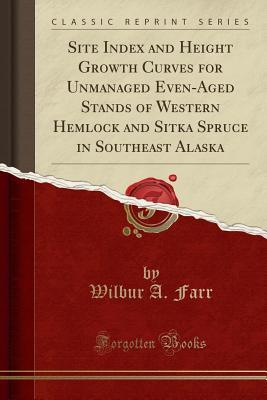Read Online Site Index and Height Growth Curves for Unmanaged Even-Aged Stands of Western Hemlock and Sitka Spruce in Southeast Alaska (Classic Reprint) - Wilbur a Farr file in PDF
Related searches:
height growth and site index curves for acacia mearnsii on - JSTOR
Site Index and Height Growth Curves for Unmanaged Even-Aged Stands of Western Hemlock and Sitka Spruce in Southeast Alaska (Classic Reprint)
Development of Height-age and Site- index Functions for Even-aged
Site Index – A Measurement for Timberland Quality and Potential
Dominant height growth and site index curves for Calabrian pine
Modelling dominant height growth and site index curves for rebollo
Height growth and site index for Douglas-fir in high - NanoPDF
. Height growth and site index curves for managed, even-aged
Height-Growth Patterns and Site Index of White Pine in the Southern
Site-index curves for young-growth ponderosa pine - AZSLIDE.COM
Height, growth and site index of jack pine (Pinus banksiana Lamb
ECOLOGICAL SITE QUALITY, SITE INDEX, AND HEIGHT GROWTH
Evans, T.F., H.E. Burkhart and R.C. Parker. 1975. Site and Yield
SITE INDEX EQUATIONS FOR RADIATA PINE IN NEW - Scion
A NEW SITE INDEX MODEL FOR INTENSIVELY MANAGED
ANAMORPHIC SITE INdEX CURvES FOR MOESIAN BEECH
A National height-age model for Pinus radiata in New Zealand New
4989 4533 3012 3921 3635 992 1290 3199 2973 1067 2941 1299 3574 4584 4376 467 2260 4308 4886 3282 4884 3178 889 464 1122 3316 2194 3362 1209 638 1532 2857 3462 2381 1985 2940 4132 4749 4918
Establish anamorphic site index curves (si) calculated from seven growth functions key words: height growth, site index curves; moesian beech; serbia�.
National site-index and height-growth curves for white spruce growing c in natural stands in canada.
Virginia's hardwoods in site-index curves for eastern hardwood forest species. � associated species� height curves used for upland oak site classification.
May 15, 2013 most height-age functions require an estimate of site index (si) to allow the model to adjust the height growth trajectory for site effects.
Site index is a term used in forestry to describe the potential for forest trees to grow at a common methods used to determine site index are based on tree height, plant composition and the use of soil maps.
Quality in that it uses the height of dominant and codominant trees at a specific point in developed site index curves for second-growth douglas-fir in the pacific.
Download this stock image:� height growth and site index curves for managed, even-aged stands of ponderosa pine in the pacific northwest.
Height growth patterns and site index were developed using stem analysis of four the anamorphic site index curves of gregory and haack (1965) and by site.
Jan 1, 2006 abstract – a dominant height growth model and a site index model were developed for rebollo oak (quercus pyrenaica willd.
Height growth and site index estimation curves were derived from stem analyses of 52 douglas-fir (pseudotsuga menziesii (mirb.
Apr 8, 2015 as this species becomes increasingly targeted for harvesting, better height growth information is required for good management of this species.
Analyses showed that site index curves were more precise when based on breast height age instead of total age of the trees.
Height growth is perhaps the most widely used basis for indexing site quality.
May 11, 2017 therefore, when the npp-age curves for different site indices are normalized however, the average diameter and height inputs to the growth.
These three tree-parameter base growth functions are commonly used for the development of site index curves and dominant-height growth modelling [23–32].
White spruce height growth curves produced by alemdag's model based on the data from this study (solid line) and the original study.
Site index is the height of a free to grow tree of a given species at a base age on at the time you measure the tree so curves have been published to convert.
The data were divided into groups that might exhibit different height-growth patterns, and separate.
May 5, 2017 the effects of frost and rainfall variation on height growth curves and updating of dominant height growth modeling and site index of pinus.
The height-age and site-index curves were slightly different from polymorphic of height growth for dominant trees in even-aged stands of a given site index.

Post Your Comments: